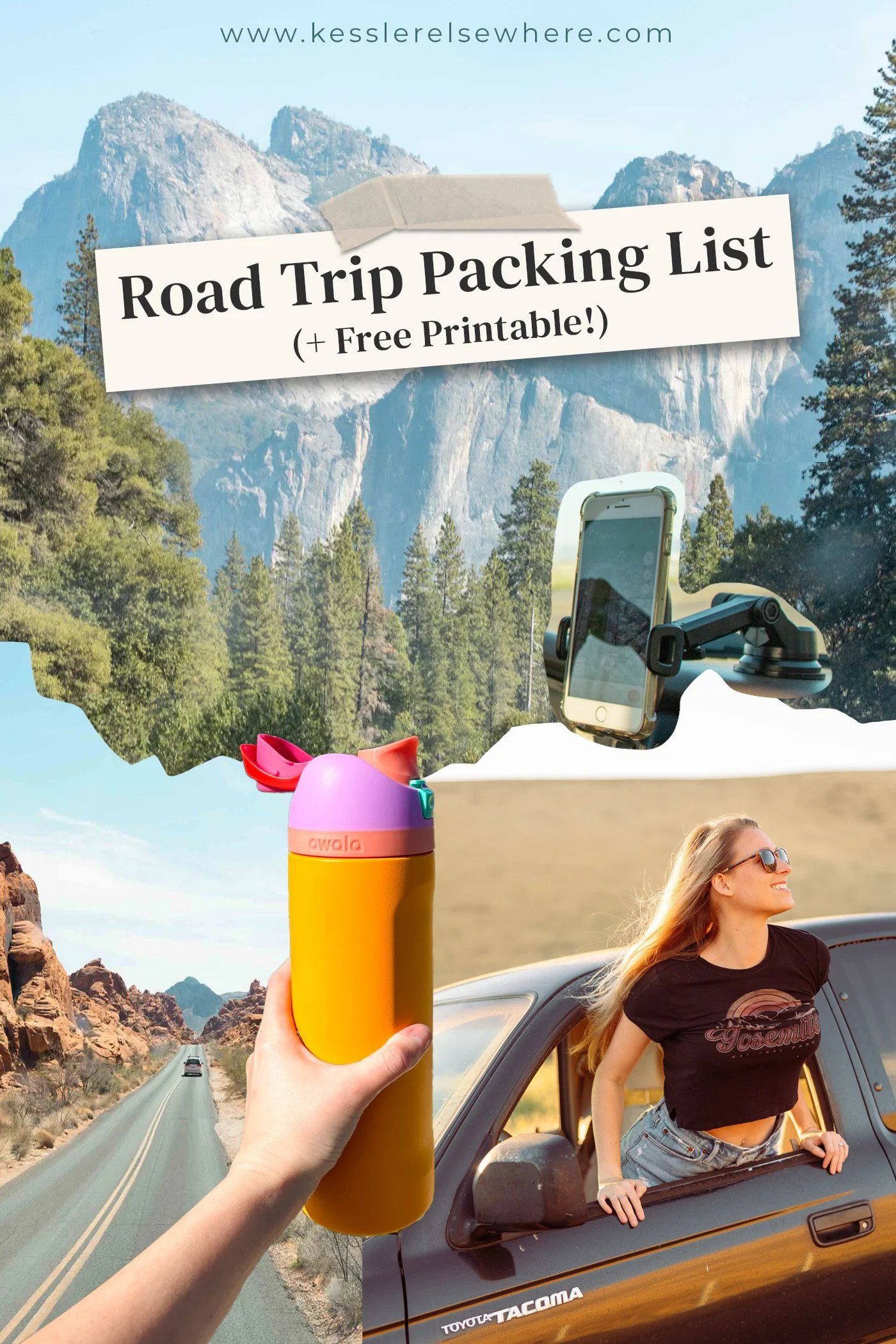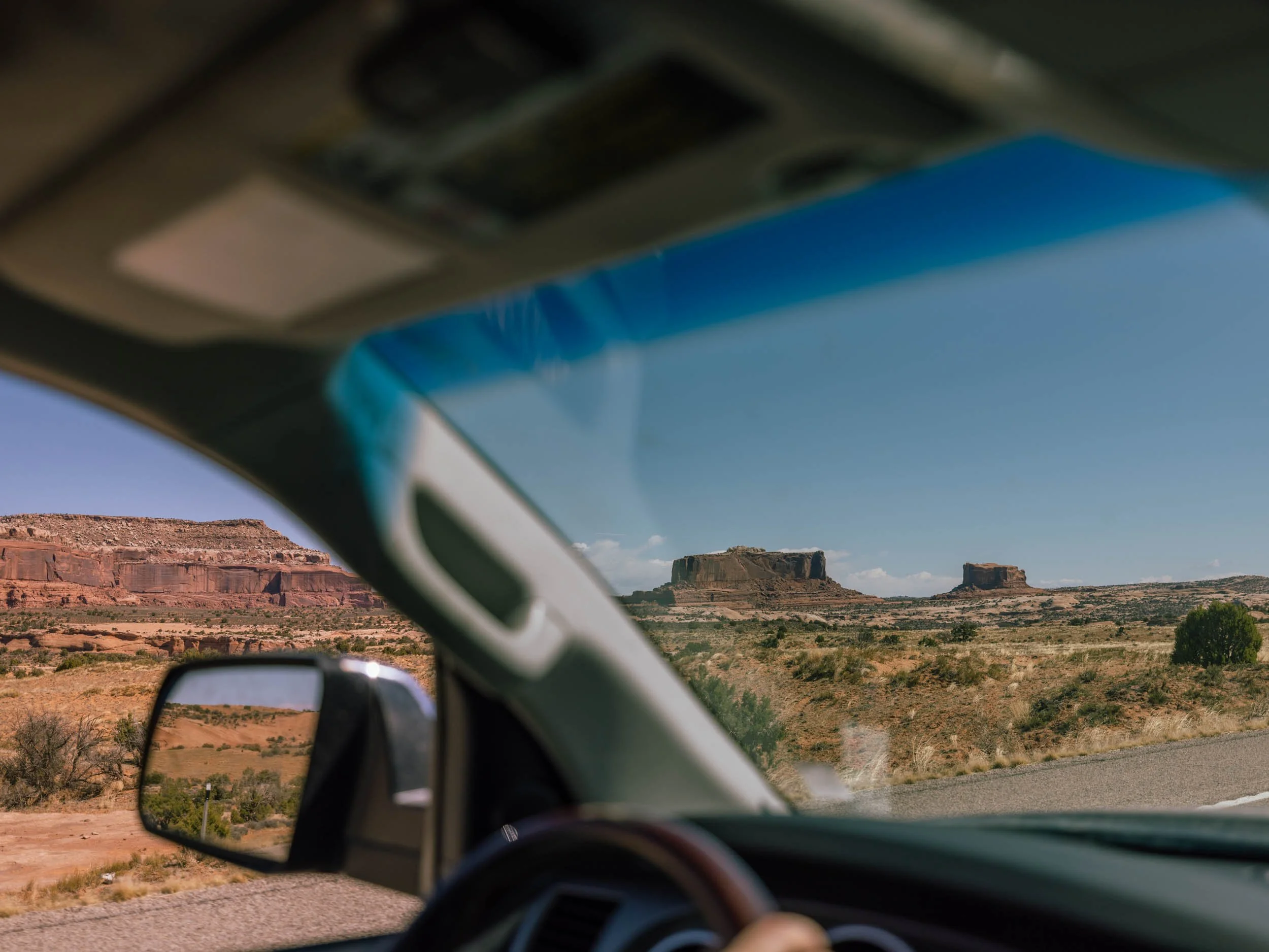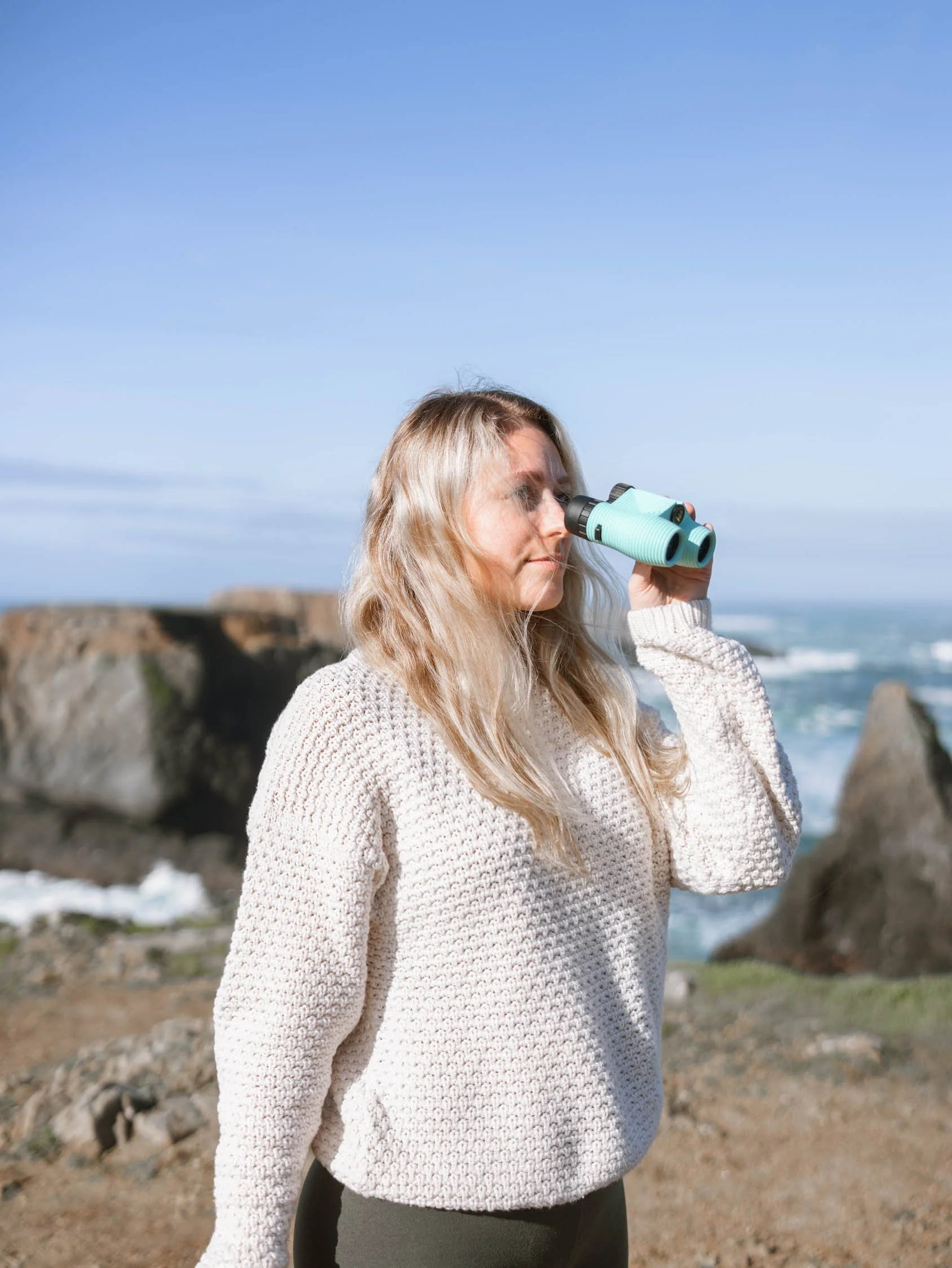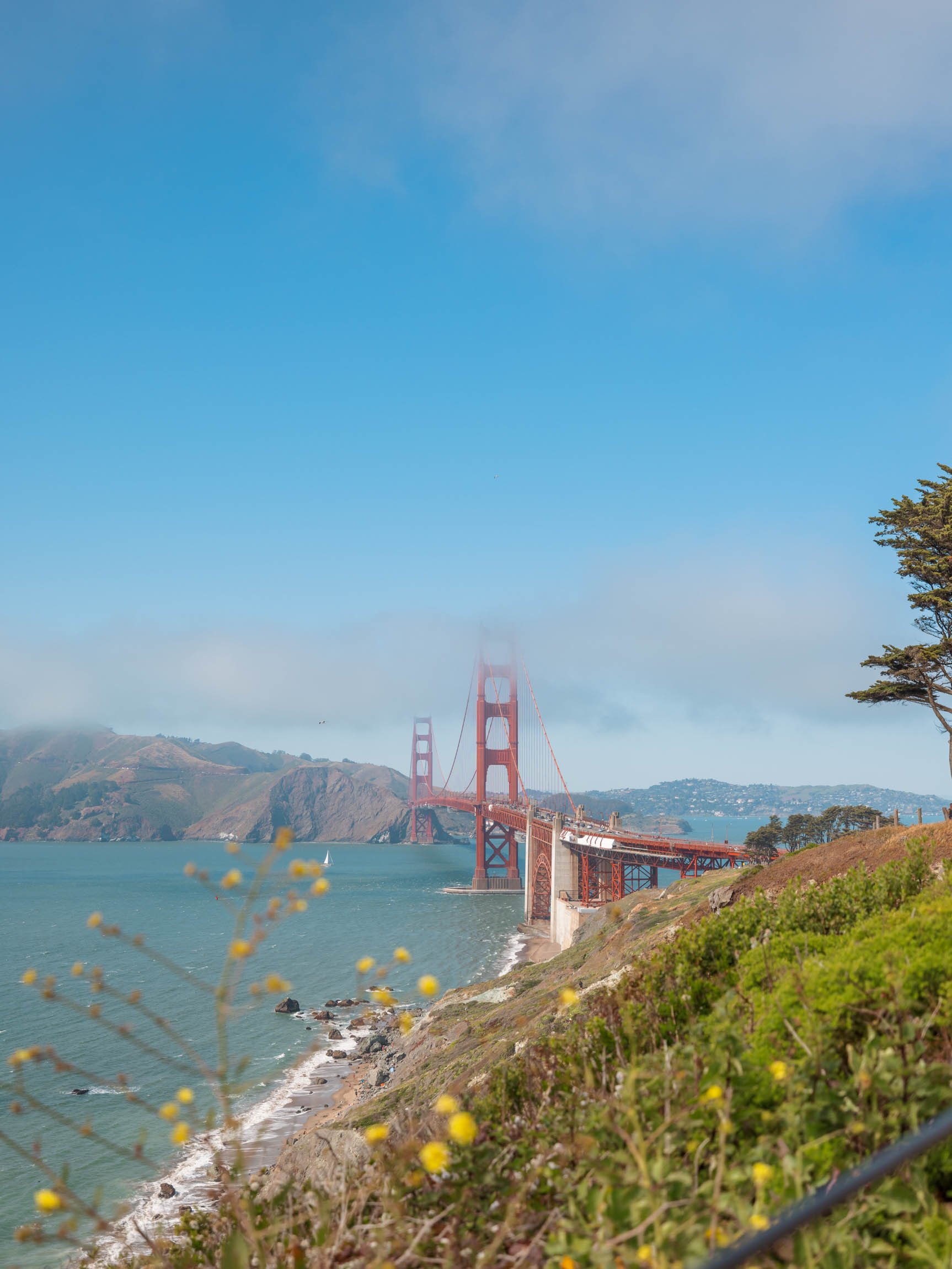Ultimate Road Trip Packing List (+ Free Printable)
Planning a road trip and not sure what to pack? This is my ultimate road trip packing list to help you be prepared, comfortable, and at ease during your next road trip.
A road trip is one of my favorite ways to travel! You can stop whenever you want, pack all your comfort items, pass through areas you wouldn’t get to see otherwise, and bond with your fellow passengers.
I’ve broken this massive list into different categories to make it easier to read and plan your trip. These are all things I recommend packing for the most prepared road trip, but many of them are just suggestions and not requirements!
Before we jump in, there are a few things to note:
If you’re flying to the starting point of your road trip, some of these items aren’t practical to pack in your suitcase (like a car organizer). You can either skip those items or head to your nearest store upon arrival to shop for anything you couldn’t fit in your luggage.
This list is specific to road trips in the USA, but you can use it for road trips around other countries as well, with some alterations.
I don’t have kids, so this list does not include any kid-specific items as I am no expert in that department.
As far as road trips go, I prefer to overpack instead of risking underpacking. When you have everything in the car, you don’t need to worry about weight limits! The only things to think about are how much space you have in the car and how easy it is to access your items.
If you just want a quick road trip packing list, you can download my printable & editable list. For a full shoppable list of all my road trip essentials, I created an Amazon list for you.
Read on for my full road trip packing list with detailed information about each item, and don’t miss my road trip tips at the end!
This post contains affiliate links that earn me a commission. For more information, read my disclaimer.
Important Items
These are items you either are required to have or it is strongly recommended to bring for a road trip in the US. Others
Driver's License / International License: It’s required to carry a license while driving in the US. If you are not from the US, you may need to obtain an international driver’s license before you arrive in the US (requirements vary by state and depend on the country you’re coming from).
Car registration: Ensure you have the registration for the car you are driving, whether it is yours, borrowed, or rented.
Car insurance: Carry the proof of insurance for your car — this is different than health insurance or travel insurance.
Car manual: In case of emergencies, unfamiliar warning lights, or just basic operation information, it’s helpful to carry a manual for the car.
Spare keys: Having spare keys for the car and gas cap (if applicable) is ideal in case the others get lost or stolen. If your car can be started just by having the keys in the car, keep them in a Faraday bag to avoid car theft.
Roadside assistance card (AAA): I highly recommend getting AAA if you don’t have it already. Not only can you get roadside assistance, like a locksmith, battery charge/replacement, a tire change, and refuel, but you can also get discounts on car rentals, theme parks, hotels, airlines, and more!
Printed reservations: I like to bring printed airline tickets, hotel reservations, etc., on trips in case I lose my phone, it breaks, or is stolen. Always better to have back-ups you don’t need than not to have them at all.
Cash: In this technology-forward age, cash is somehow still king. Some parks with parking fees or toll booths only take cash. It’s also useful to have cash for tipping (hotel staff, restaurants, coffee shops, etc.) or buying items in cash-only shops or stands.
Medicine & Safety Items
Medicine container: I use a travel medicine container that folds out with different compartments for all my non-prescription meds like Tylenol, Melatonin, etc.
Prescription meds: By law, you’re required to carry any prescription meds in their original container. Bring your prescription as well to avoid any issues.
First-aid kit: You can put together your own first aid kit or buy a premade one with everything you need.
Windshield cover: If you’re traveling during a hot season, a windshield cover can help keep the car from getting too hot while parked. It’s also great for privacy if you’re car camping!
Window covers: These window covers are also ideal for parking in the sun or car camping.
Car Safety & Repair kit: These are items you hope you will never need to use, but you do not want to be without a good roadside emergency kit. Things like jumper cables, a window breaker, a car jack, and flares, for example.
Flashlight: Yes, your phone probably has a flashlight on it, but sometimes a phone is just not bright enough. Having a bright flashlight is ideal for searching for items in the car at night or tent camping.
Scissors/Swiss Army knife: The number of times I’ve needed scissors and didn’t have any is too many to count. They’re one of the last things I think to bring on road trips, but they’re always useful! You could also bring a Swiss Army knife that has small scissors on it.
Batteries: Carry some batteries for any battery-powered items that you bring. Amazon Basics has the most affordable ones I’ve found and has the common AA and AAA batteries.
For the Car
Bins/organizer: You can use clear bins to help organize all your items in the car or get a car organizer.
Owala water bottle: This is my favorite bottle because you can tip it back to drink or drink from the straw! I have a 24oz for travel and a 32oz for home, but they also come in 40oz.
Travel mug: For keeping hot drinks warm for hours, a Yeti travel tumbler is my go-to! They come in different sizes and colors, so you can pick one that best suits you.
Sunglasses: Get some sunglasses that block UV to protect your eyes while you drive.
Sandwich bags: These quart slider bags are great for keeping snacks in, putting small trash in, keeping things water-resistant in backpacks, or packing lunches for the day.
Phone mount w/charger: Having my phone up closer to my eyeline when I am using Google Maps makes it significantly easier to follow the navigation. I use a phone mount that also uses wireless charging. You need to plug the mount into power in your car — I have a cigarette lighter in my old 2003 car, but you may have a USB slot.
Pen/pencil: Another item that isn’t top of mind but always comes in handy is a pen and/or pencil! Writing notes, signing papers, checking off license plates on a road trip game print-out, etc.
Sticky notes: You can use sticky notes for labeling bins in the car so you know what is in each one. My favorite use is writing reminders for myself, like “ice packs in freezer” on a sticky note on the hotel room door, so I don’t accidentally leave them behind.
Travel games: You may be all set with podcasts, audiobooks, and music, but I love a classic road trip game print-out! The license plate game, road trip scavenger hunts, and bingo are all fun games for both adults and kids.
Anker Power Bank: This power bank can charge your phone, iPad, laptop, AirPods, smart watch, and more! It has an extreme amount of power and lasts for weeks, depending on how much you use it. It’s a bit on the heavier side, but it's worth it to keep my devices charged.
Comfort
Blankets/pillows: If you’re car camping or planning any naps, having some cozy blankets and pillows will make for a much more comfortable sleep.
Car mattress: Again, if you’re planning to camp in your car, get a roll-up mattress or an inflatable one to make it as comfortable as possible.
Seat cushion: Long drives can be a pain in the ass (literally). A seat cushion for you, and maybe some for the passengers as well, will keep you comfortable for longer.
Earplugs: I hate the foam earplugs that leave your ears sore. Wax earplugs have been a complete game-changer for me. They’re the best for travel when different, unfamiliar noises would otherwise keep me awake.
Cleaning & Hygiene
Napkins/paper towels: I keep a stack of napkins from takeout/fast food in my glove compartment at all times. They get used often and are nice to have! A roll of paper towels will be even handier for longer road trips.
Wet wipes: Wet wipes are made for bathroom business, but they are also excellent for wiping up any food/drink spills and cleaning dirty/sticky hands in a pinch.
Toilet paper: Many bathroom stops along road trips are lacking in toilet paper. Some national parks or state parks may be missing some in the vault toilets as well. Never hurts to carry your own roll!
Trash bags: The small trash bags are perfect for the car or while camping. Many campgrounds require you to pack your trash and take it with you — a trash bag is necessary for that.
Hand sanitizer: Self-explanatory, but road trips and travel in general can be full of germs. Plus, many bathrooms in state/national parks don’t have soap. Hand sanitizer is a good backup for when you can’t wash your hands with soap and water.
Alcohol wipes: Use alcohol wipes for disinfecting surfaces or items. If you don’t have these, you can always use hand sanitizer and a napkin.
Mini vacuum: It’s not necessary, but having a cordless mini vacuum is useful if your road trip includes hiking (mud/dirt) or trips to the beach (sand).
Dust pan & brush: For similar messes listed above, having a brush and dustpan can make cleaning up your car quick and easy.
Laundry detergent sheets: You can bring liquid detergent if you prefer, or get a pack of laundry detergent sheets that dissolve in water to create detergent. They’re perfect for travel and can be used in washing machines or for hand-washing.
Food & Drinks
Cliff Bars: One of my favorite ways to quell hunger until a lunch or dinner stop is a Cliff Bar. They come in large packs at Costco, or you can order them in packs on Amazon.
Freeze-dried coffee: I’ve yet to find a coffee in the US that tastes as delicious as Mount Hagen Freeze-Dried Coffee. It dissolves in cold water, so you can easily make an iced coffee on the go!
Chai latte packs: I’m a chai latte girl, and you can’t easily find a vegan chai latte, especially in smaller towns on road trips. I absolutely love this powdered vegan chai latte — just add hot water.
Simple Mills snacks: Eating junk food on a road trip is fun at first, but it starts to feel bad after a few days. I like Simple Mills snacks since they’re slightly healthier than a regular bag of chips or crackers.
Fruit: Any fruit that doesn’t need to be refrigerated and holds up well is perfect for a road trip — bananas, apples, cherries, and oranges are all good options.
Canned/packets of tuna & crackers: Sometimes, there may be long stretches of driving through the middle of nowhere at lunch time. In those instances, crackers and canned/packets of tuna are a good snack to fill you until you find a full meal somewhere.
Gallons of water: It’s important to stay hydrated, despite the inevitable bathroom stops you’ll have to make. Bringing gallons of water (amount depends on trip length & # of people) will ensure you always have access to fresh water for drinking or washing.
Dried fruits & nuts: These are a good, healthy snack to fuel you between meals while on the road.
Travel cutlery: I have a set of metal cutlery that is useful, but I also save up any forks, spoons, knives, or chopsticks from takeout/fast food throughout the year for future road trips.
Compostable plates: This isn’t a necessity, but you may want to bring compostable plates for meals on the go. I try not to buy disposable items, but composable is the next best if you need plates on the road.
Small cooler: If you pack any food items that require refrigeration, then a small cooler is needed. You can buy ice at various gas stations as needed or use ice packs and refreeze them at accommodations that have freezers.
Luggage & Accessories
Packing cubes: My Peak Design packing cubes are one of the all-time best travel purchases I’ve ever made. They’re incredibly high-quality, compress clothing down, and help keep it organized.
Day Backpack: I carry an anti-theft backpack for day trips because it’s cute and pick-pocket proof. For hiking and more outdoorsy activities, a Peak Design backpack is ideal.
Fanny pack: Prefer something smaller than a backpack? A fanny pack is handy for hiking or carrying just the necessities (phone, ID, etc.) for an outing.
Turkish towel: If my destination has any bodies of water, I’m bringing a Turkish towel! They’re thin, lightweight, and don’t take up any space. You can also use them for showering if the place you’re staying doesn’t have any towels.
AirTags: Gone are the days of wondering where your items are — now we can track everything with AirTags. The peace of mind knowing where my important bags are at all times, even when they are back at the hotel, is worth the price tag to me.
AirPods/headphones: It’s illegal to wear headphones while driving in more than 5 states, including California. But, they’re great for passengers who don’t want to listen to whatever podcast/audiobook the driver is playing!
Outdoors
Garmin Vivoactive Watch: It’s not necessary, but having a Garmin smart watch helps me track my steps, body battery, sleep quality, and heart rate. It tells me when I need to take it easy, and it’s handy to check the date/time!
Binoculars: If you’re a hobby bird-watcher or just want to get closer views of the amazing animals and landscapes you’ll see during your trip, a pair of small binoculars is lovely. I like Nocs.
Sunscreen: Even while driving, it’s important to use sunscreen to protect your skin from the sun. Road trips often include lots of time outdoors, and nothing is worse than getting sunburnt mid-trip.
Bug spray: Depending on where you’re going and in which season, there may be mosquitoes or other biting insects. Get a bug spray with Deet or lemon-eucalyptus oil to keep them away.
Bite zapper: This seems like a gimmicky item, but during a trip to Italy and Corfu, we used the bite zapper on new mosquito bites, and it kept them from getting larger or itching for days!
Clothing
This is by no means exhaustive, because what clothes you pack greatly depends on when and where you are traveling. These are just a few of my general recommendations for most road trips.
Socks: Even if you’re traveling in warm weather, it’s nice to have some comfortable socks for cold nights, walking, or hiking. I’m weirdly picky about my socks, and my current favorite ones are the Hanes ankle socks and no-show socks.
Comfortable shoes: Bring comfortable shoes for driving. You may also want to bring trail shoes, hiking boots, snow boots, or sandals, depending on where you are going and what activities you’ll be doing.
Cardigan or jacket: I prefer something that opens at the front for when I inevitably have to take it off while driving (not recommended). In case you get overheated while behind the wheel, a cardigan or zip-up jacket is best!
Scarf: For cold-weather travel, a scarf or snood will help hold the heat in around your neck.
Beanie: A beanie will keep your head warm in cold weather and also helps keep hair out of your face when it’s windy.
Gloves: You can bring a few different types of gloves, depending on your needs – gloves for snow or cold weather, work gloves for changing a tire, or nitrile gloves for cleaning up messes and protecting your skin while disinfecting.
Tips For Road Trips
Download Google Maps Offline
No matter the road trip you’re taking, whether it’s from San Francisco to San Diego or visiting all 5 Utah National Parks, there will be spots without any cell service.
Before you leave for your trip, go to Google Maps on your phone (whichever one you plan to use for navigation) and download the areas of the map where you are going to drive.
This will allow you to still get directions even when you don’t have any service. The only things you can’t see in downloaded maps are reviews or additional details about a location.
If you have a limited data plan on your phone, you can also download maps and then put your phone in airplane mode to save data as you navigate.
For step-by-step directions on how to download Google Maps, visit the tutorial.
Download Audio Entertainment
Other things to download for offline use when you don’t have service or don’t want to use up your data are audiobooks, podcasts, and music playlists.
Tip: If you listen to an audiobook on the road, choose one with an engaging narrator or a captivating story to avoid getting sleepy while driving.
Use Packing Cubes & Bins
I already mentioned these, but packing cubes have significantly improved my trip packing since I started using them. You can get cheap ones that can help keep your clothes organized, but the higher-end ones have much better compression.
For road trips, I pack outfits in each cube by day/destination vs. putting all my shirts in one cube. For example, on my Highway 395 road trip, I packed each cube based on each stop: one cube for Lake Tahoe, one cube for Mammoth Lakes, etc.
The best packing cubes are from Peak Design. The zipper is highly durable (no breaking open from over-stuffing), the cubes compress clothing better than any others, and there’s a separate compartment for dirty clothes.
If compression isn’t an important factor for you and you just want to use packing cubes for organization, then the ones from Amazon will be enough.
Bins help to keep everything in the car organized and make it easy to find what you need quickly. I like clear ones that I can see through and stick a label on, but you can also get rigid fabric organizers for the car, too.
Do More Driving at the Start
When you’re planning a road trip, it’s much easier to plan long driving days than to actually experience them.
As the trip progresses, you’ll probably get more exhausted from driving and exploring. It may sound counterintuitive, but doing the longest stretches of driving at the start of the trip is better than saving them for the end.
The start of the trip is likely when you’ll be most excited and energized for driving. I’ve done road trips where the middle had 6-8 hours of driving, and it felt pretty demoralizing when I was already exhausted from long days of driving and exploring.
It may not be possible to do this, depending on your itinerary, but try to do as much driving at the top as you can.





























